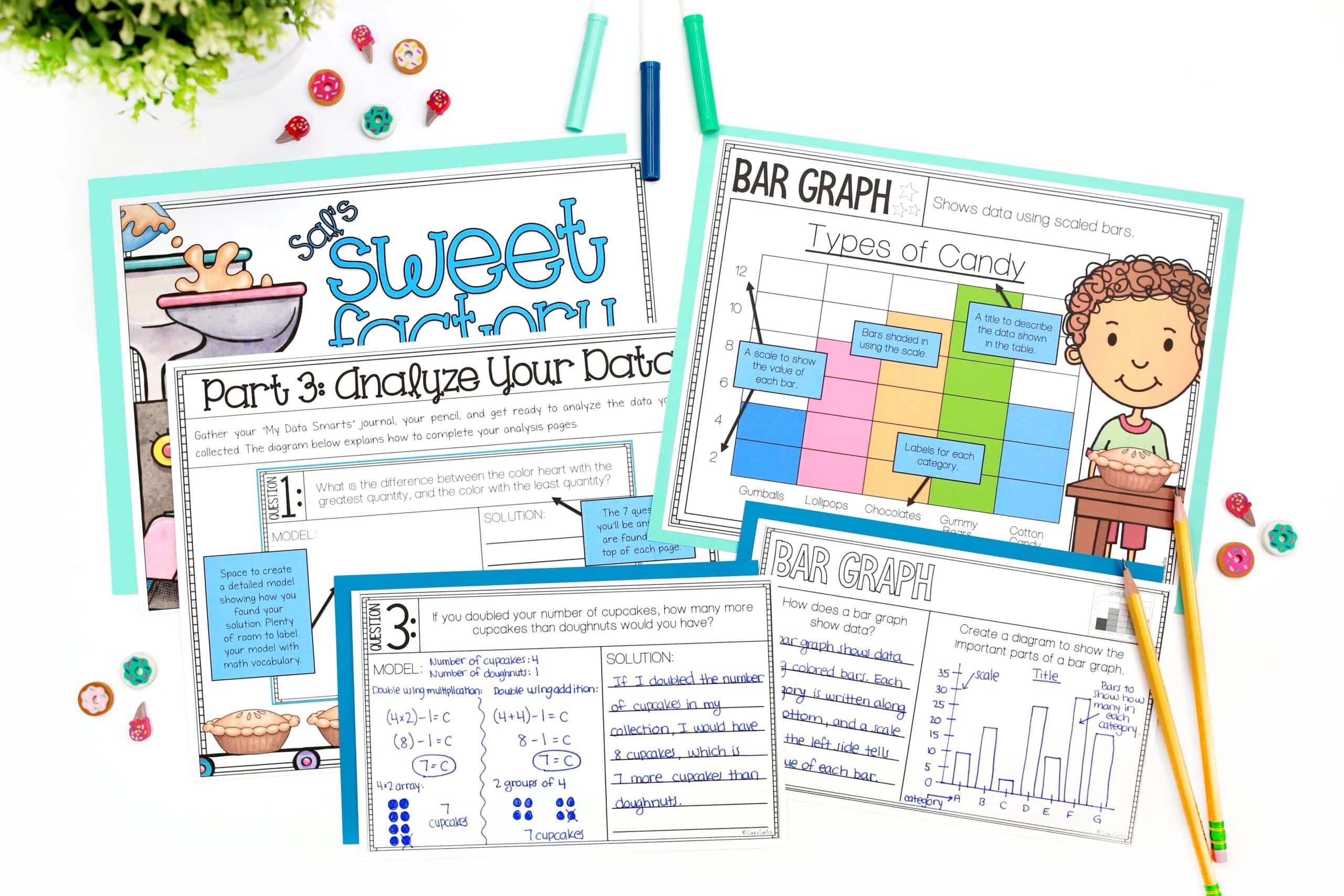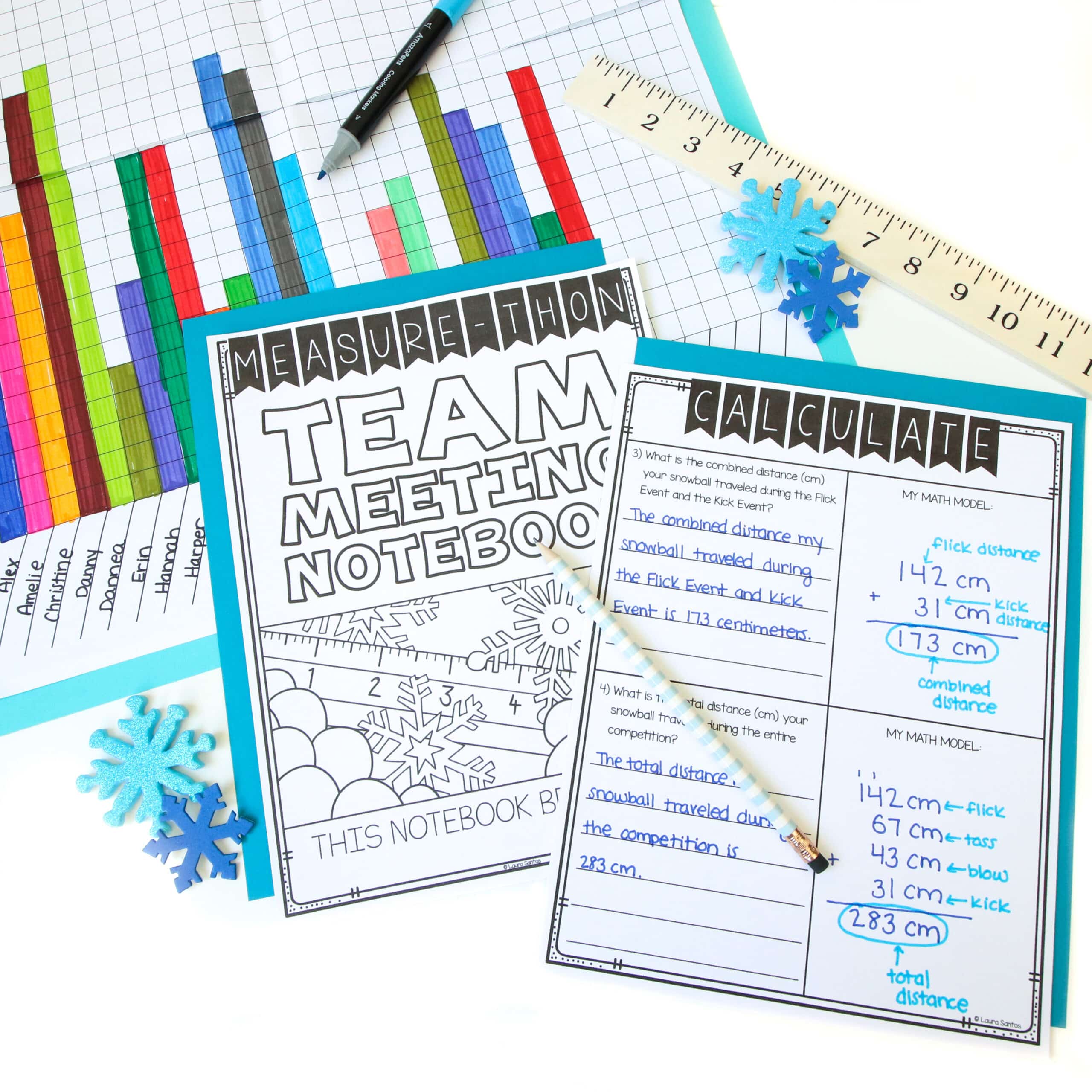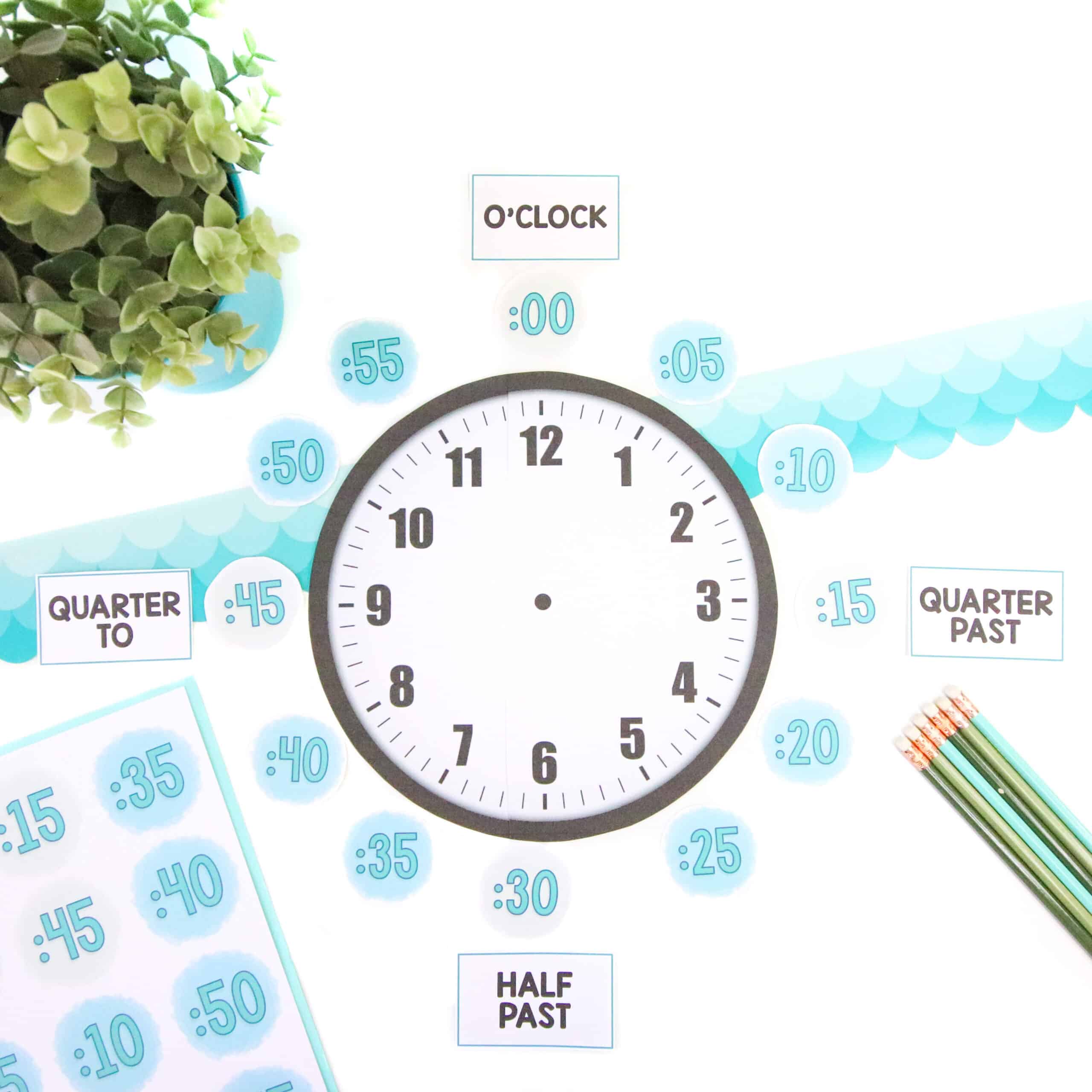Each week this month, I’m taking time to share a collection of the most commonly asked Math Workshop questions I receive. Today, I’m jumping into the second category of questions which are all focused on the Meet with the Teacher Rotation of workshop.
Here’s a refresher on the questions I’ll be focusing on each week during this blog post series:
- Mini Lessons (Week 1)
- Meet With the Teacher Rotation (Week 2)
- At Your Seat & Technology Rotations (Week 3)
- Hands-On Games Rotation (Week 4)
If you prefer to see all the questions in one place, or you want a printable version where you can add your own notes, I’ll send you a PDF with the full collection. Click here to let me know if you’re interested. Let’s jump into your questions about Meet with the Teacher.
Part 2: Meet With the Teacher Questions
Q: What materials do you use during Meet With the Teacher? Do you use manipulatives when meeting with students?
For the most part, I use personal whiteboards, paper and pencil, and manipulatives related to the current unit. Nothing too fancy. 🙂
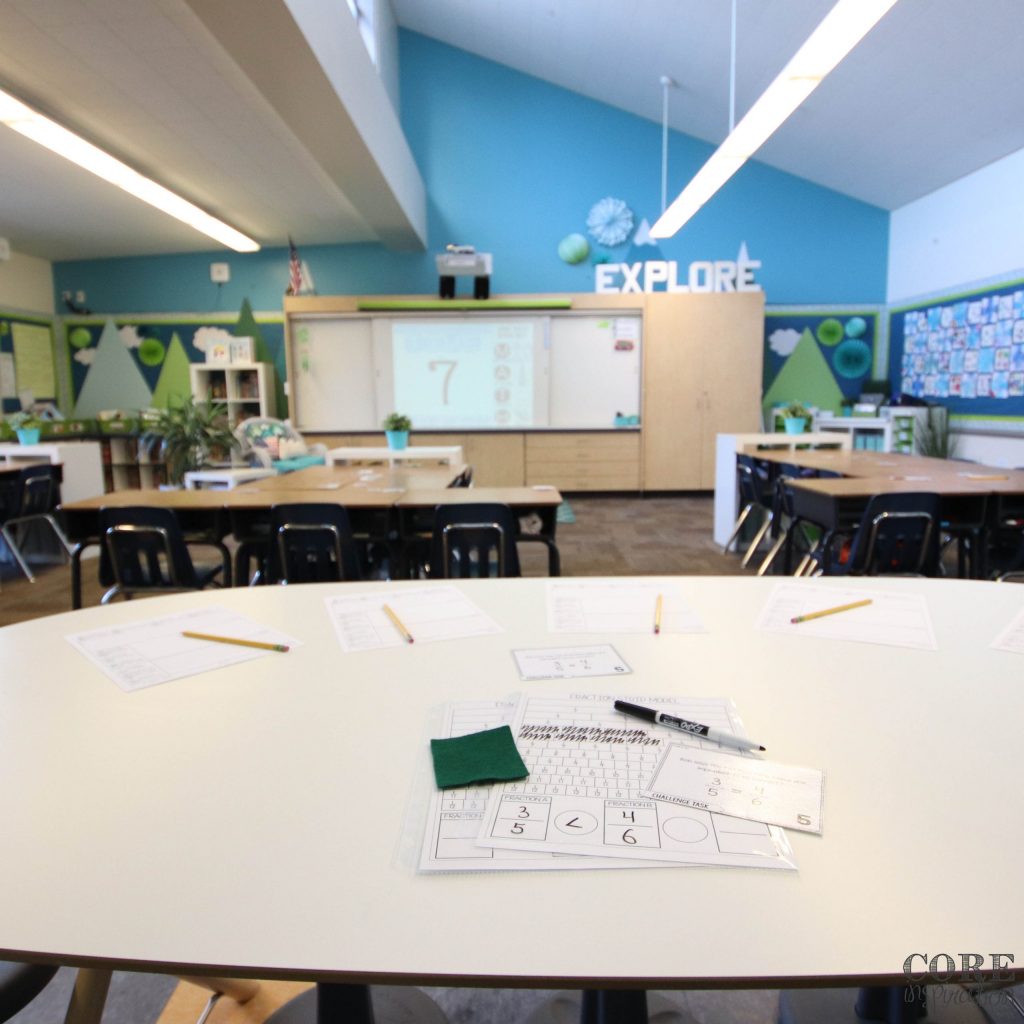
Q: How many students are you meeting with during a small group session?
Typically 3-6 students. Keep in mind, Meet With the Teacher for some students on some days looks like one-on-one conferences at their seats, me observing as they play math games or meeting with them as they work on math projects. I really like the flexible approach.
Q: What do students do if they finish a rotation early?
At Your Seat: when finished with the reteach page, work on word problem task cards.
Hands-On: when you finish a game, play another round, try the challenge version of the game (game cards provide these differentiation instructions), or play a different game.
Technology: when you finish your Khan Academy assignments, work on IXL or multiplication.com
Q: Do you use a learning menu or must do/may do sheet to help students keep track of all this?
I use a digital rotation board. It shows who should work on what and lists the to-dos for each rotation each day. It also tracks the duration of each rotation, automatically signals to the class when it’s time to transition to the next rotation, and provides a countdown timer to scaffold efficient transitions between rotations.
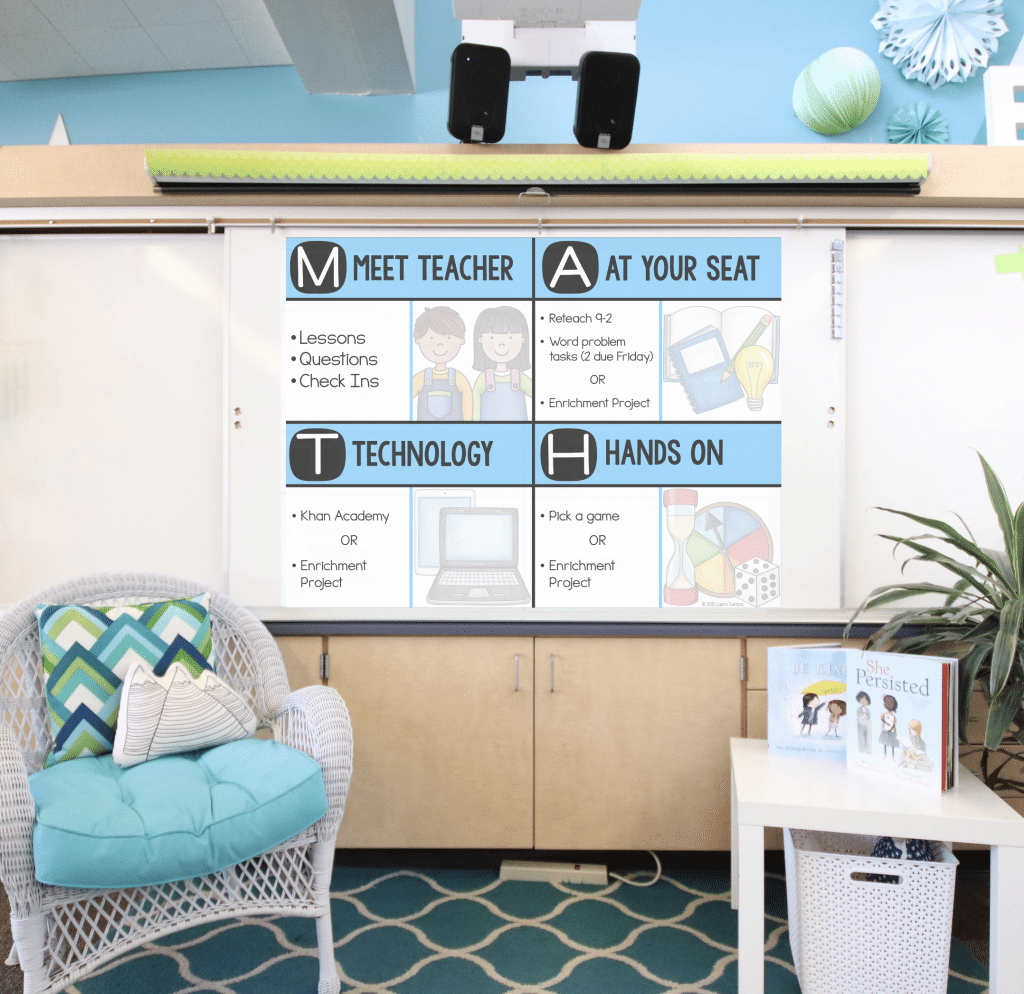
Q: How do you prevent students who are doing the other rotations from interrupting when you are teaching your small group?
Using the Math Triads Routine eliminates the problem of small group interruptions.
Math triads were designed with the “three before me” routine in mind. A student should ask three people to assist him/her before asking the teacher.
- First, the student must ask him/herself by thinking long and hard about the question/problem, and use personal resources to find a solution.
- If a solution is not found, the student must collaborate with a classmate, and combine brainpower and resources to find a solution.
- If that classmate doesn’t have the resources to help, the student must collaborate with yet another classmate.
- Occasionally, the student still has no solution and must turn to the teacher for guidance.
In that case, I recommend having a place where a student can write their name to let you know they have run into a problem and need your assistance when you have a moment to spare.
Take time to establish your expectations for what students should do as they wait for you to check in with them. Should they move on to the next problem? Should they work on another activity? Should they do anything to prepare so your meeting time with them is more efficient?
If you’d like to learn more, you can hop over to this detailed post about introducing the Math Triads Routine.
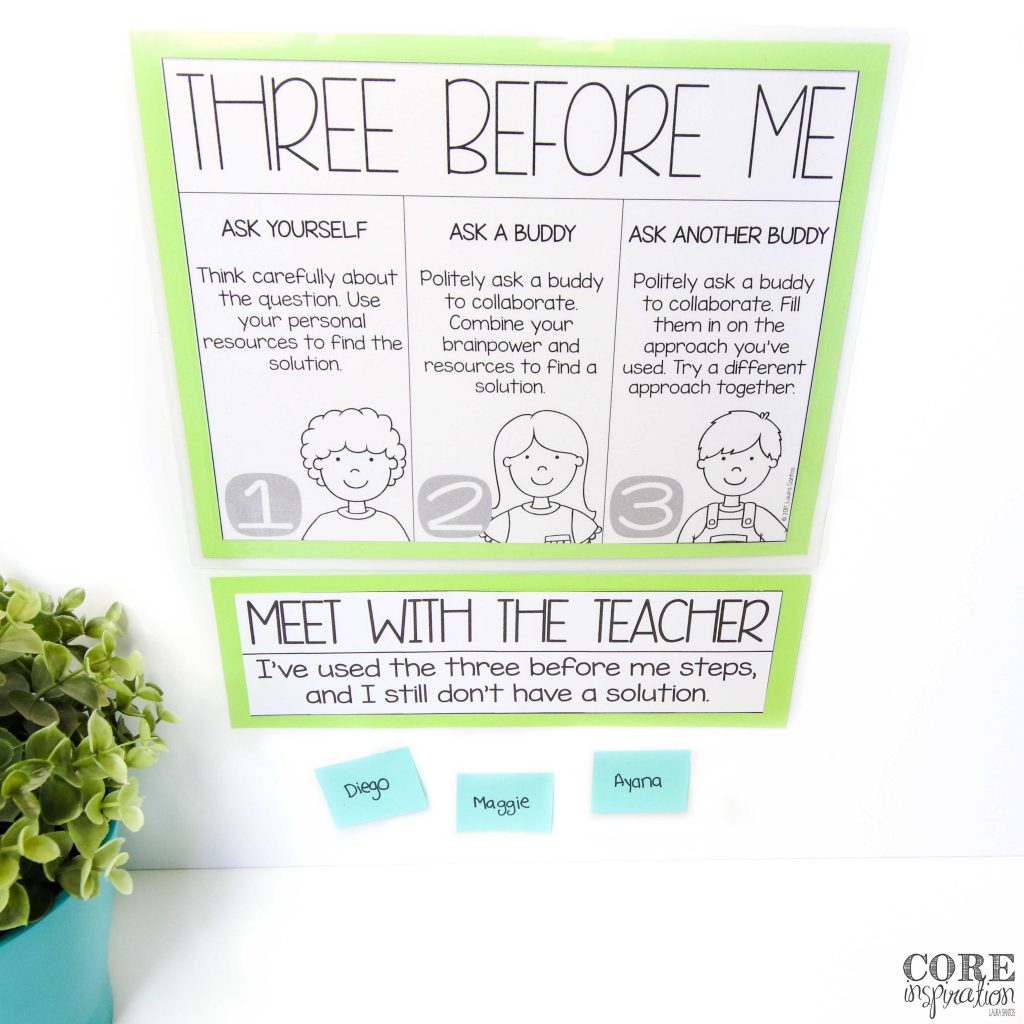
Everything students need regularly during Math Workshop can be found in three easily accessible parts of the classroom. Most of our math materials are stored in the math workshop corner. Extra paper is always available in the same spot and never runs low because the student who is hired for the classroom job, Teacher’s Assistant, writes reminder notes whenever supplies need restocking. Project supplies are always stored in the project drawers so students can work through each step of their project without having to wait on supplies being distributed.
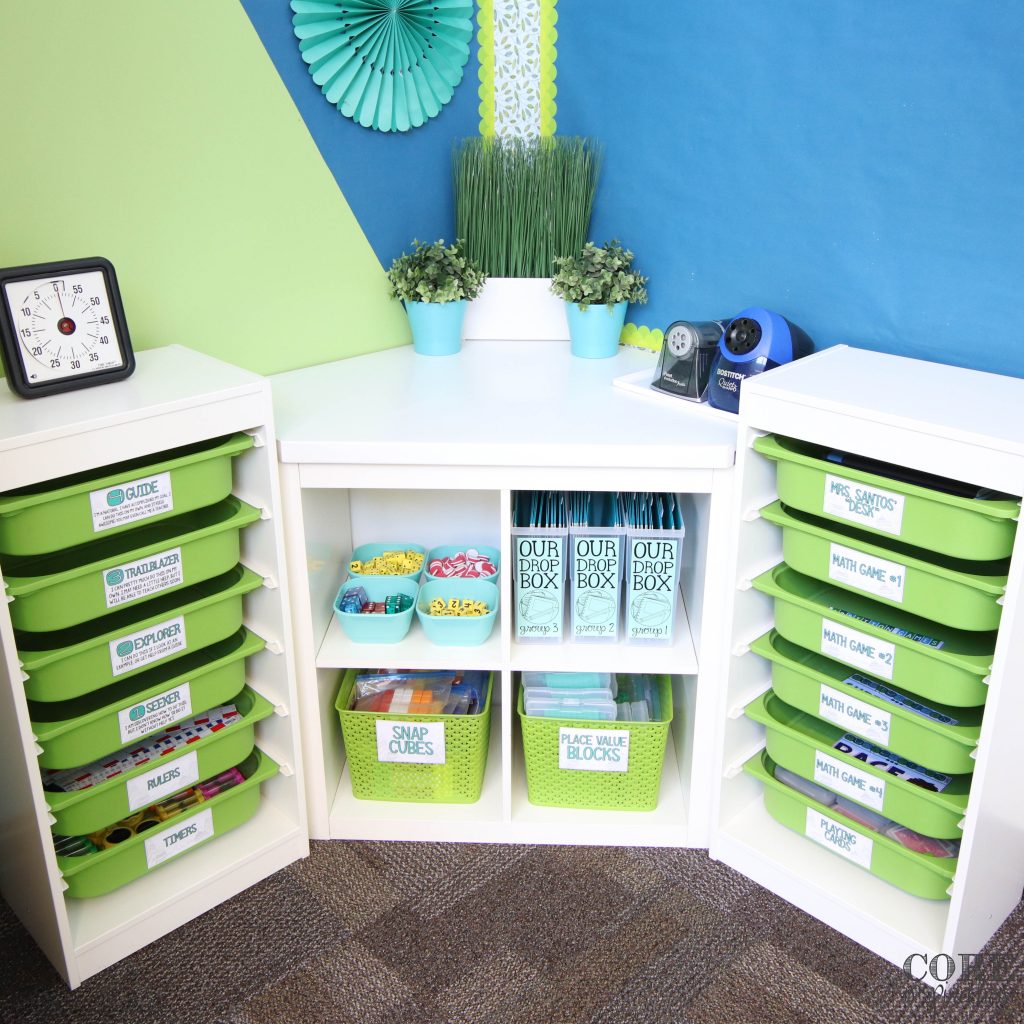
Q: How do you keep your small group lesson quiet enough so that it doesn’t distract the rest of the students who are working on At Your Seat, Technology, and Hands-On?
Collaborative work and plenty of talking are important parts of learning. Even when people are talking a collaborating, the classroom can be a calm space where everyone can focus.
Taking the time to ask students how they feel about a calm, focused learning environment boosts student buy-in to stay calm and quiet even as they work during times of day that have lots of moving parts (like Math Workshop).
I recommend introducing teeny tiny voices as a way to respectfully talk/collaborate during workshop so everyone can stay calm and focused. During this lesson, you’ll teach students how they can physically feel what their different voice levels sound like. This will help them learn how to speak in a “normal voice”, a “whisper voice”, and a “teeny-tiny voice”.
If the noise level becomes too loud during workshop and students forget to use teeny tiny voices, you can introduce the double chime. Since the noise of a double chime will be a novelty, the first time it’s heard over the bustle of collaboration, students will immediately freeze and scan the room for the source. Their curiosity makes this the perfect opportunity to introduce how this tool will be used to further support respect and care for one another during workshop.
- The double chime will only ring if their noise level is too high.
- If the chime rings once, it is a warning to adjust to teeny tiny voices and continue working.
- If the noise level increases again, the chime will ring a second time, which means everyone must silently return to their seat and work independently for the remainder of that rotation/work session.
- When a new rotation begins, the chime count resets.
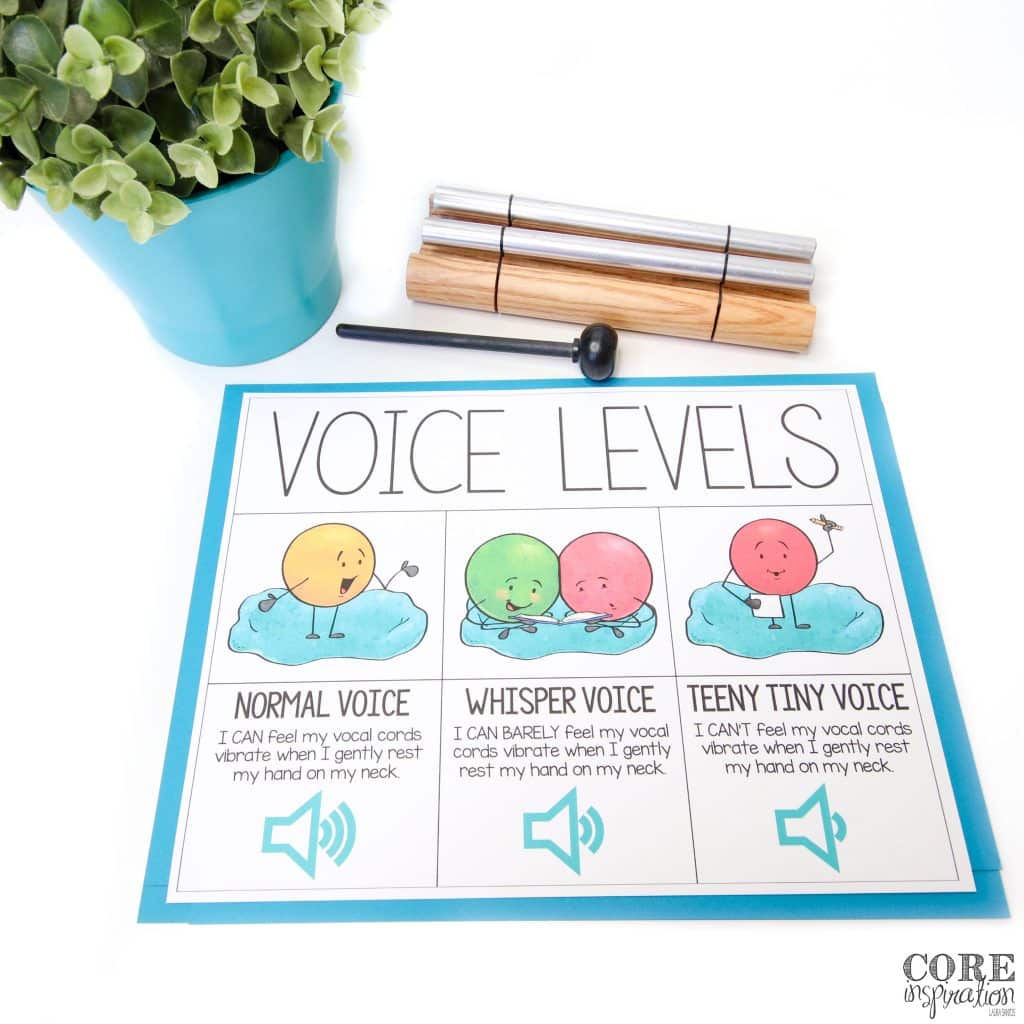
Wrap Up
There you have it! All these questions about Meet with the Teacher are from motivated teachers like you who are working hard to implement a Math Workshop framework that makes math differentiation more manageable. Next week, I’ll be sharing answers to questions about the At Your Seat Rotation & Technology Rotation of Math Workshop.
If you’re anything like me, reading a list of questions always sparks a few new questions, so feel free to drop those in the comments below. 🙂
Interested in the resources featured in this blog post for your own classroom? Click the links below to hop over to my store.


